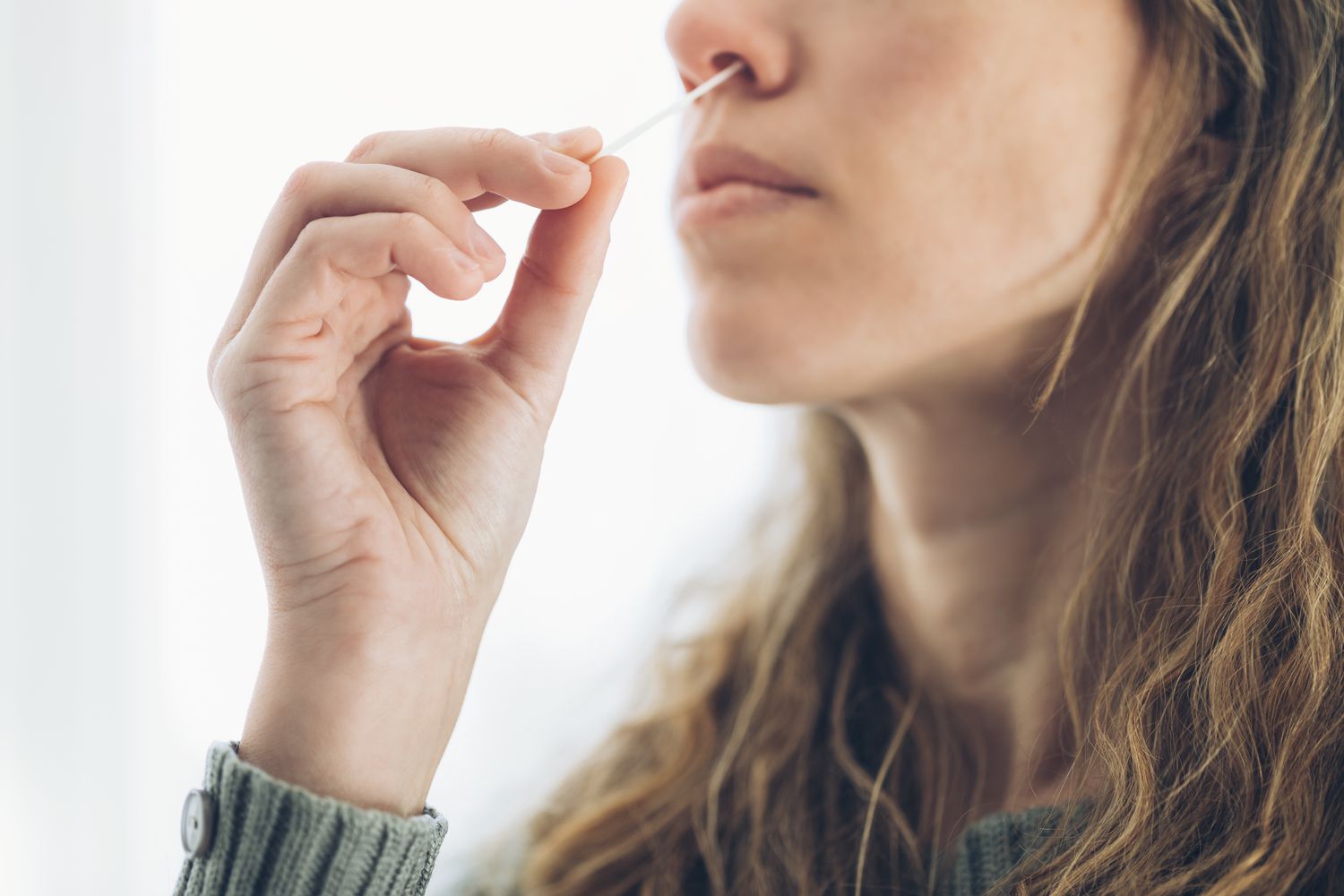Alternative Options to COVID Tests This Winter: What You Should Consider Instead

If you have respiratory symptoms that you suspect might be more than your run-of-the-mill common cold, it’s reasonable to wonder if it’s COVID, the flu, or some other illness. Fortunately, you can now figure that out in the comfort of your own home.
Several over-the-counter kits that test for both flu and COVID at once have hit the market over the past year, and the Food and Drug Administration just approved another combo test in early October. The Healgen Rapid Check COVID-19/Flu A&B Antigen Test is the first of these tests to be greenlit by the agency after undergoing a full, rather than expedited, review process.
The authorization “expands the options for individuals with respiratory symptoms to receive information about their health from the comfort of their home,” Michelle Tarver, MD, PhD, acting director of the FDA’s Center for Devices and Radiological Health, said in a statement. “The FDA continues to take actions that support the development and availability of at-home tests for a variety of medical conditions.”
With the approval of this new test thrusting dual COVID/flu tests into the spotlight, you might have questions about them—like how they work, how reliable they are, and whether doctors recommend them over a simple COVID test.
Here’s what infectious disease experts had to say.
A COVID/flu combination test is a kit that detects SARS-CoV-2, the virus that causes COVID-19, as well as two antigenic types of influenza: influenza B and the more common influenza A. Adults and kids as young as two can typically use the kits.
These combination tests have been used in doctors’ offices, but people have had the option of over-the-counter tests since the FDA approved the first one—Lucira by Pfizer—in February 2023.
The agency issued an emergency use authorization for that test, a process it can use to speed up authorization. It did the same for other combination tests approved afterward, such as the FlowFlex COVID-19 and Flu A/B Home Test and iHealth COVID-19 Flu A&B 3-in-1.
The Healgen test, on the other hand, “has gone through the full FDA approval process, which is a very strict process,” Richard Wender, MD, chair of the Department of Family Medicine and Community Health at the Perelman School of Medicine at the University of Pennsylvania, told Health. (It’s unclear, however, when people can buy it.)
All combination tests function similarly to a standard COVID test, requiring a nasal swab. After 15 to 30 minutes, people can see whether their sample tested positive or negative for COVID or the flu types.
Some of the tests, such as the new Healgen kit, are antigen tests that detect proteins from a virus. The Lucira test is a molecular one, which is more sensitive and works by detecting and amplifying the genetic material of the viruses.
The FDA recommends that people who test positive should follow up with a healthcare professional, as should people who test negative but still experience symptoms.
Every test has slightly different accuracy rates, but research shows that FDA-approved kits are fairly precise.
The new Healgen Rapid Check COVID-19/Flu test, for example, correctly identified 99% of negative and 92% of positive SARS-CoV-2 samples, 99.9% of negative Flu A and B samples, and 92.5% and 90.5% of positive Flu A and Flu B samples, respectively.
“They are reliable if used in the first few days of symptom onset and if the technique is followed correctly,” Amy Edwards, MD, an assistant professor of pediatric infectious diseases at Case Western Reserve University’s School of Medicine, told Health. “As with all home tests, they are more likely to give a false negative than a false positive.”
According to Wender, the tests “will miss some cases” but are similar in accuracy to over-the-counter COVID tests.
Doctors generally agree that COVID/flu combination tests are a plus for anyone eligible to use them—and the better option than just testing yourself for COVID alone. (No rapid home tests solely check for the flu.)
'You get an answer about both viruses with only having to swab yourself once,' Edwards said.
The tests are a 'great addition to what we've used in the past,' agreed Wender.
Testing for these viruses at home has multiple advantages, according to Barbara Bawer, MD, a family medicine physician at The Ohio State University Wexner Medical Center. 'You know what you have or possibly don't have, can quarantine if needed, avoid exposing others and getting them sick, but also potentially being eligible for treatments earlier than you might have been if you had to wait for an appointment,” she told Health.
Certain groups, in particular, may especially benefit from the dual tests, experts said.
They are “great options” for people traveling or living in more remote locations without easy access to a provider, Bawer said.
People over 65, who are considered high risk for serious complications of COVID, can also benefit from these, along with those who are immunocompromised, Wender said.
Finally, Wender added, these tests can help people who have to decide whether to attend an event. “If I have a wedding to go to and I have early symptoms, is it fair to show up? Knowing you test negative tends to suggest you’re OK—that is really helpful and can guide decision-making,” he said.
A disadvantage is that the combination tests can be costly—and in some cases, more expensive than COVID tests. Kits offered online appear to range from $15 to more than $100, but many fall at around $40.
However, if you don’t have health insurance or have a high co-pay, using a test like this to find out if you have the flu or COVID may be less expensive than a doctor’s visit.
There is also a slightly higher risk of having a false negative with an antigen test—the majority of over-the-counter tests—than if you were to get a molecular test, Wender said. But that’s also the case if you swab yourself for a “regular” home COVID test.
Ultimately, doctors are on board with COVID/flu combination tests. “I feel very confident that doctors will rely on the results of these tests and would love to have patients use them,” Wender said.




